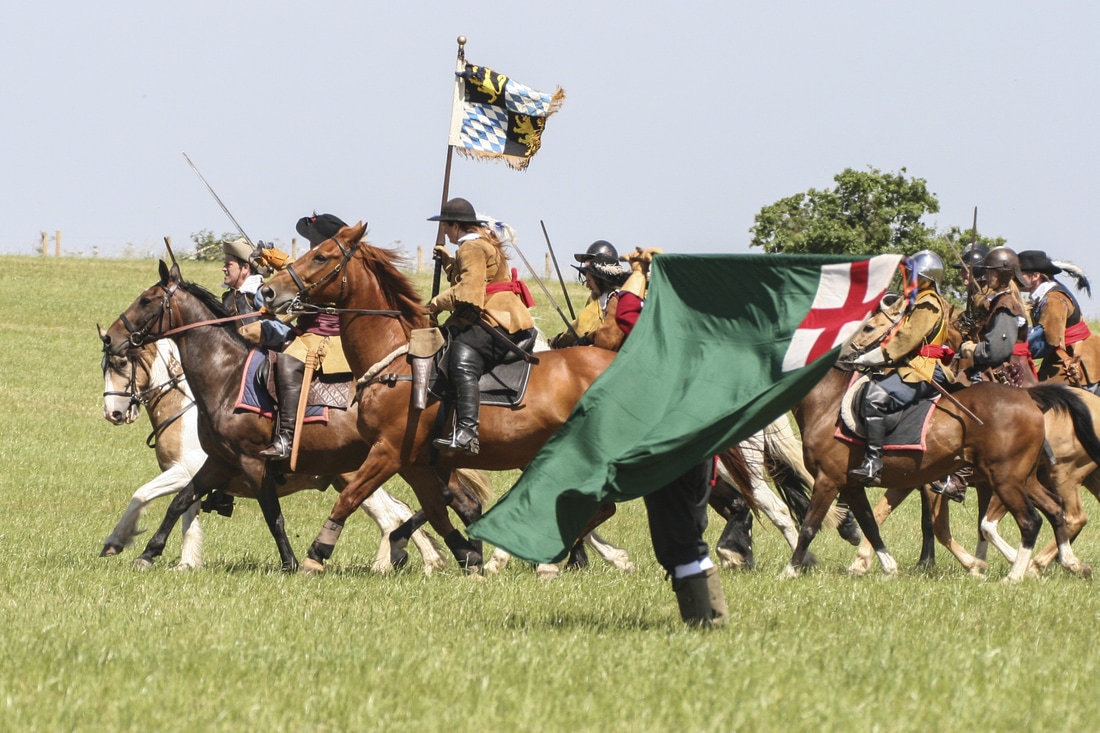I am titling the paper, THE OTHER CIVIL WAR. Why? If you go to Amazon and type English Civil War fiction into the search engine, you get page after page of books set in the American Civil War. This provokes a heavy sigh from this writer...
So come June, it is my chance to redress the historical balance and try to explain the entire history of the English Civil War in 40 minutes. I can but try, so as an introduction I will attempt the entire English Civil War in one short blog post!
The English Civil Wars marked a watershed in English history. It is the only time in its history that England became a republic for a brief period of 11 years from 1649-1660.
The complex politics that gave rise to this situation had their roots back in Tudor times. When Elizabeth I died childless, James VI of Scotland, son of “Mary Queen of Scots” became James I of England. He had two sons, the older, Henry died while young leaving the younger son, Charles, a shy young man with a pronounced stammer, to succeed him as King Charles I of England. The character of Charles I has been much debated and discussed but I think one can say that like a lot of insecure men, he had a strong stubborn streak and a heavy dependence on his advisors, at least two of whom were to die horribly; the Duke of Buckingham by assassination and Earl of Stafford on the block. He further raised the ire of the protestant population of England by marrying a Catholic, Henrietta Maria, sister to the King of France.
Charles had above all, a belief in the divine right of the king to rule, and when he found himself thwarted by his Parliament, he dissolved Parliament and ruled alone, imposing taxes on an increasingly unwilling and unhappy population. Forced to recall Parliament in the early 1640s (to fund a war against Scotland), he found himself increasingly at loggerheads with the country’s elected representatives and in early 1642 he and his family fled London.
In August 1642 he raised the royal standard at Nottingham (where it was promptly blown down in a gale - some would say a portentous gale!) and England found itself plunged into a long and bitter civil war.
The first part of the civil wars lasted from 1642 until 1646 and ended with the defeat and imprisonment of the King. At the King’s instigation a second civil war flared in 1648 and the King’s refusal to negotiate with his captors led eventually and tragically to his execution in January 1649.
In 1650 his exiled son, Charles II landed in Scotland and tried unsuccessfully to regain his throne by force. The Battle of Worcester in September 1651 resulted in his defeat and after a six week adventure, Charles II managed to make good his escape to France but many of his supporters were captured, killed or transported to the West Indies where they were used as slave labour on the plantations.
The void left by the execution of the King was filled by the appointment of Oliver Cromwell, the victorious commander of the Parliament’s forces, as Lord Protector. The clichéd view of Cromwell’s reign is of a dark, cheerless time when puritans banned music, dancing and Christmas celebrations and the “Major-Generals” imposed a martial rule over England. This is not entirely just. Religious toleration, for example, enjoyed a much freer time under Cromwell then at any time in the previous reigns.
Cromwell died in 1658 and was succeeded by his son, Richard. “Tumbledown Dick” was not the man his father had been and in 1660 at the behest of the Army, Charles II returned to the throne of England and England’s brief experiment with republicanism was over.
See you in Portland...


 RSS Feed
RSS Feed